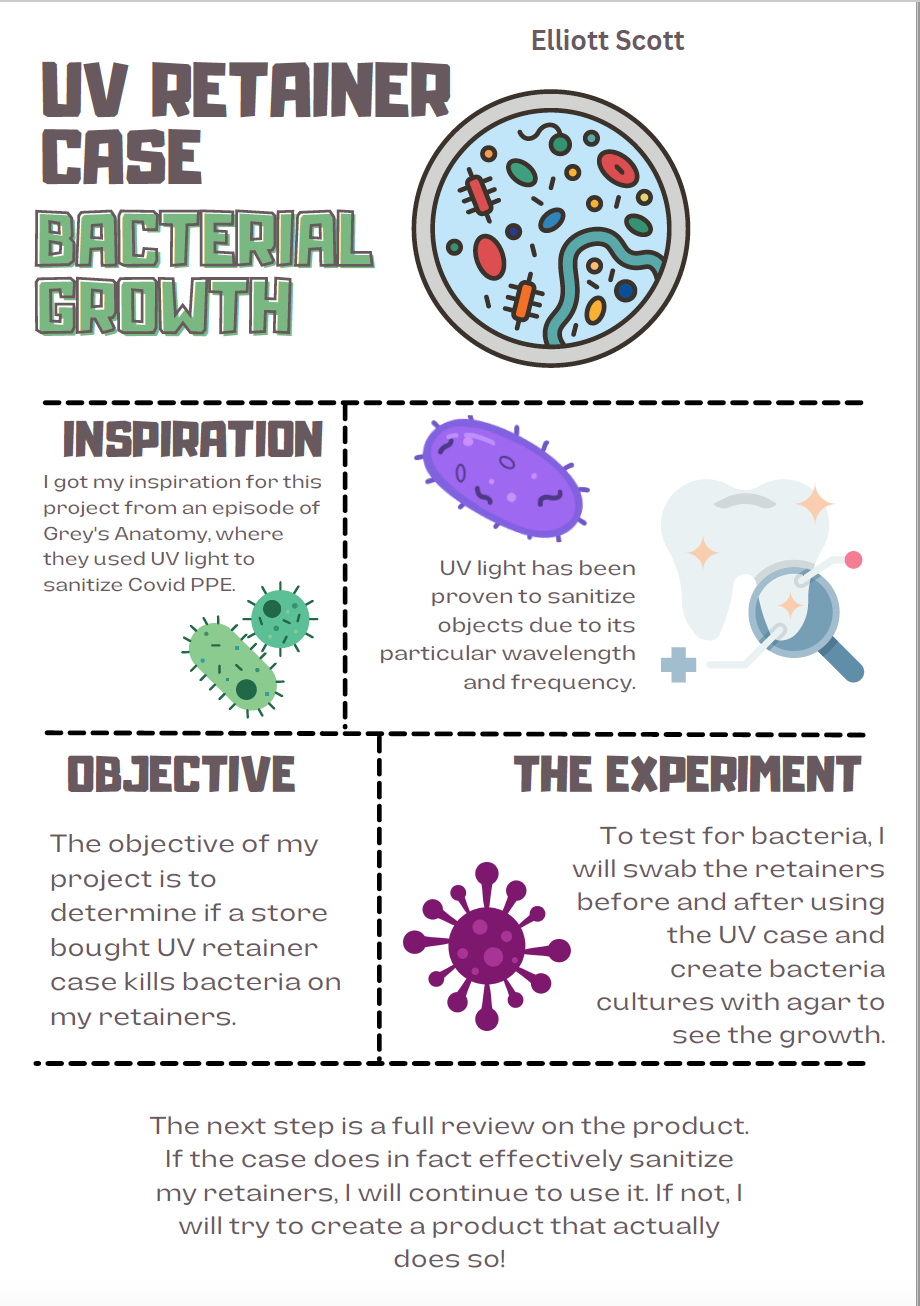UV Retainer Case: Bacterial Growth
While my original idea was to create a retainer case with UV lights inside for sanitation, it has since gone on the market. Instead, I chose to conduct a bacterial growth test to evaluate how well a UV retainer case from Amazon kills bacteria on my retainers.
I got my inspiration for this project from an episode of Grey’s Anatomy where they used a germicidal robot emitting uv light to sanitize masks and other Covid related PPE during the pandemic. Although they used a whole room for the sanitation, I decided to downsize this for my project, and focus specifically on retainer cases.
The problem that I am addressing is the nasty and harmful bacteria build-up on retainers, which are inevitably transferred to the mouth of the user.
There are two types of retainers:
- Metal: Metals are almost entirely unaffected by UV light because of the availability of free electrons to absorb photon energy without undergoing energy transitions or bond dissociation.
- Plastic: many plastics offer excellent levels of UV resistance that increase lifespan, prevent deformation, and fight the effects of photo-degradation such as chalking, loss of strength, and increased brittleness.
- In this case, I will be conducting my experiments on plastic retainers.
Ultraviolet rays come from radiation that falls between the visible light range (what humans can visibly see) and the x-ray region of the electromagnetic spectrum. UV rays can be produced by high temperature at any source, such as specialized lamps and lasers, but they most commonly come from the sun.
Ultraviolet light inactivates microorganisms by forming pyrimidine dimers in RNA and DNA, which can interfere with transcription and replication — this is the process which would stop the growth of bacteria.
Zooming in further, there are different types of UV light
- UV-C (green), also known as germicidal UV, includes wavelengths from 200 to 280 nm.
- This is the traditional form of germicidal UV that scientists have used to disinfect water, air, and surfaces for more than a century. UV-C is effective at destroying and deactivating all kinds of pathogens like viruses, bacteria, mold, and fungus.
- Far-UVC is a smaller segment of UV-C, specifically the wavelengths between 207 and 222 nm.
- It’s believed to be safe for humans to be around. This specific range of light has a very narrow bandwidth that cannot penetrate past the outer layer of our skin, but it can still inactivate viruses and bacteria.
- A hospital in Japan released a study on the impact of far-UVC on humans in August 2020 which found no side effects from the far-UVC light.
My ultimate goal with this project is to test if a store-bought UV retainer case kills bacteria like it says it does. If it does not effectively do so, my next step may be to try to improve on the product. If it is successful in inhibiting bacteria growth, I will continue to use the retainer case for my own retainers.


